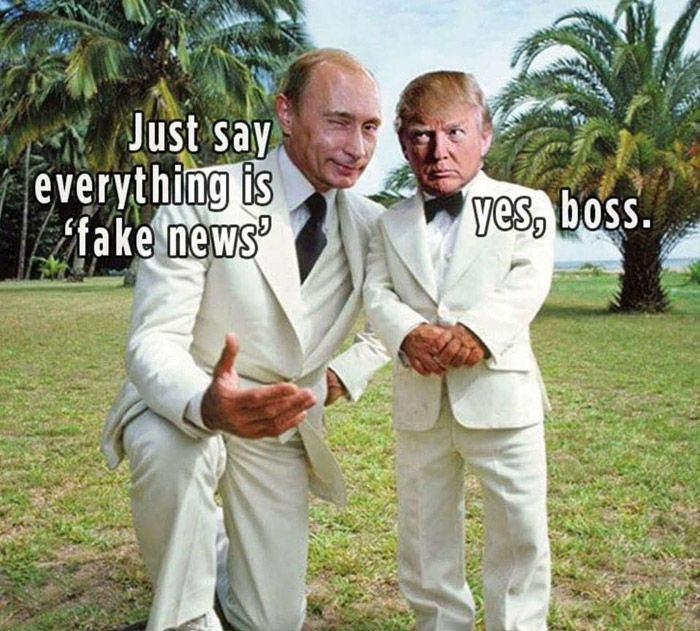War Propaganda
Nowadays memes
While memes originally had a comedic purpose, they invaded the political realm in a far more sinister manner during the 2016 presidential campaign. Like the propaganda posters from the world wars, politically pointed memes employed a striking visual coupled with effective communication intended to alter the mind frame or subconscious of a viewer. In many cases, they also aimed to dehumanize the opposition and to personalize the political cause in question.
Most worryingly, the new political art format has far greater viral potential than the posters of yesteryear. Instead of just government-commissioned posters, any figure, domestic or international, with a political agenda can reach a mass audience with weaponized symbols, images and digital art to advance a political cause. While memes may seem like the silly clutter of Internet culture, studies of advertising and the way we consume information have shown that such images can alter our subconscious, often in ways we do not understand. Or as one Garfield meme put it, "You are not immune to propaganda."
The danger with memes is that the visuals are no longer centrally orchestrated pieces, designed to advance the public good. They spread in real time, seemingly from the depths of the Internet, and virtually anybody can achieve virality through the power of mass replication. Discerning facts from fiction has become the real challenge with this latest incarnation of visual propaganda. Time will tell if memes will become a permanent part of our political history, but for now, we are still experiencing their unpredictable effects.
Today, in the war on Iraq, propaganda is more apparent then ever due to the number of media sources embedded in the war. More than 600 Journalists are in military units reporting on the progress of the war. Peter Maass wrote an article for the New Republic magazine describing a set-up event where almost 100 journalists filmed British tanks rolling up in a V formation and soldiers running to attack. The purpose of the media event was to "bolster support back home" however Maass couldn’t help but see right through the V formation "money shot" and look at the event as propaganda.
The use of propaganda is very complicated. For example, the people of Iraq have propaganda messages coming from all different sources making it difficult to know which one is correct. The effort to collectively change people's opinions is not an easy game and comes down to a psychological war as much as a war of fighting. The impact of today’s foreign digital war is even more insidious than the old tactics to undermine a declared enemy. Russia and other hostile powers are undermining democracy itself by sowing public distrust, discord and division, and distorting free elections, starting with ours but also reaching into Western Europe.
Another example is how today's media portrays all people from the Middle East as terrorists, just like propaganda during the early nineteen hundreds portrayed every black as the typical poor cotton farmer, and every person living in Germany or Japan as a terrible person.
Propaganda is a powerful force that changes people’s perspective. Governments needed a piece of advertisement that could reach everyone and fast. At the time, posters were the easiest way to achieve their goal. However, propaganda does not necessarily have to be a propaganda poster, it can be expressed in many forms such as documents, songs, cartoons, artwork, and movies that have triggered different perspectives on issues. That's one of the differences we see from then to now.
USA




RUSSIA




BRITAIN




GERMANY



